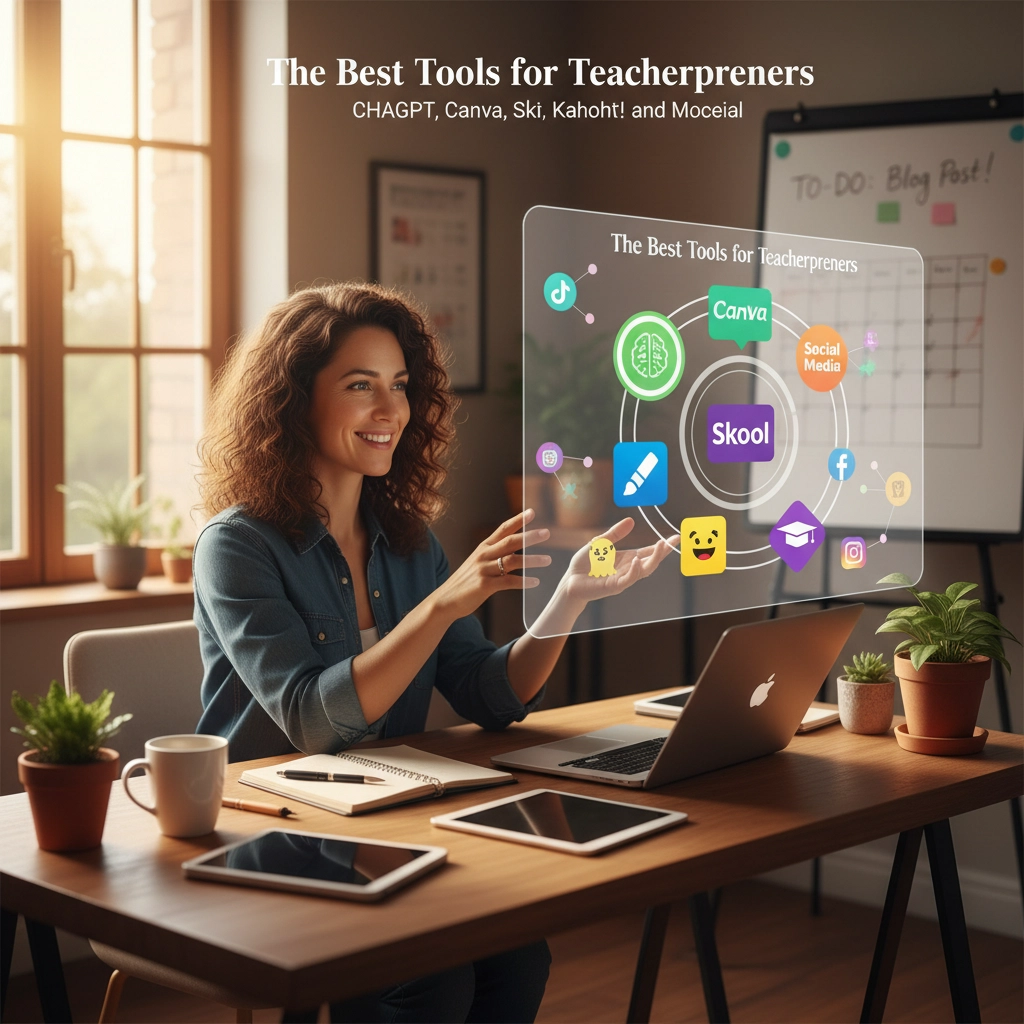Contents
Toggle
Meet David De’ Ath, founder, editor, and writer at Wonderful World English. With his extensive background as an English teacher, David provides valuable insights and practical tips on ESL for students and teachers alike.
Being an exceptional teacher is much more than giving lectures and homework.
The very best teachers strive to inspire, understand, and connect with their students.
In this role, you’re not just an educator but a mentor, a guide, and a pivotal figure in your students’ educational journey.
Any teacher will agree that this career can be rewarding but also very demanding at times.
This guide offers key strategies for teachers to enhance their skills: building positive student relationships, using innovative teaching methods, creating an inclusive environment, and focusing on personal and professional growth, all aimed at making the classroom more engaging and effective.
I am an experienced teacher, and I appreciate anyone wanting to improve in this wonderful craft.
We will delve into practical tips and strategies designed to elevate your teaching skills.
These insights aim to transform your classroom into a vibrant, engaging, and effective learning space.
Without further adieu, let’s uncover some insights into how to be a better teacher.
How to Be a Better Teacher
Dive into these essential strategies designed to enhance your teaching skills.
From building strong student connections to embracing modern educational methods, these tips will help you create a dynamic and impactful learning environment.
Let’s begin with our first key approach:
1. Develop a Positive Relationship with Your Students
At the heart of successful teaching lies the skill of forging positive connections with your students.
Such relationships create a nurturing and dynamic educational atmosphere that benefits everyone involved.
Below are key strategies to help you reinforce these vital bonds:
a) Get to Know Your Students
Take time to connect with your students on a personal level.
Discover their hobbies, passions, and motivations.
This understanding will reveal their individual strengths, challenges, and learning preferences.
By adapting your teaching to these personal nuances, you’ll create a more impactful and engaging educational experience for each student.
b) Open Communication
Create a classroom culture where open communication is encouraged.
Motivate your students to express their opinions and worries, assuring them that their perspectives are important and respected.
Regular interactions and discussions can pinpoint problems at an early stage and forge a sense of trust among students.
c) Practice Understanding and Compassion
Acknowledge the diverse backgrounds and unique challenges each student faces.
Demonstrating empathy and compassion can profoundly influence both their academic and personal development.
Celebrate their successes and be a source of support and guidance when they face challenges, helping them feel valued and understood.
d) Actively Listen
Make a conscious effort to actively listen.
Tuning in not only to what students articulate but also to what remains unsaid can offer deep insights into their emotional state and needs.
Such attentive listening shows your true dedication and concern for their views and experiences.

e) Cultivate the Belief in Growth
Inspire your students to embrace a growth mindset, the concept that skills and intelligence can expand through dedication and perseverance.
This mindset can significantly enhance their self-confidence and instill a deep-seated passion for continuous learning.
Playing games can be an excellent way to keep students engaged while improving their confidence and skills.
For a list of some of the BEST classroom games to play, the guide below is for you!
Related Article: Fun Classroom Games to Play – Teacher’s Guide
f) Aim for a Welcoming Presence
Work towards being approachable and amicable.
Maintaining an open and friendly attitude makes students feel comfortable seeking your guidance, and confident that they will be listened to and supported in a non-judgmental environment.
g) Involve Them in Decision Making
Actively include your students in decisions impacting their educational journey.
Whether it’s choosing class projects or establishing classroom norms, their participation can cultivate a feeling of responsibility and ownership over their learning experience.

2. Embrace Innovative Teaching Methods
Adopting innovative teaching strategies is key to boosting student involvement and academic success in the rapidly changing realm of education.
Explore the ways to incorporate these advanced methods into your teaching approach:
a) Harness Educational Technology
Leverage the power of educational technology to add an exciting layer to your teaching.
Incorporate interactive software, educational apps, and various online materials to make your lessons more dynamic and interactive.
These tech tools can also support customized learning experiences, enabling students to learn in a way that best suits their pace and preferences.
b) Include Hands-On Learning Experiences
Move beyond conventional lecture methods and embrace interactive learning.
Involve students in group tasks, discussions, and team-based projects.
Incorporate tangible learning experiences like experiments, field trips, or role-playing activities to make educational concepts more relatable and memorable.
Such interactive approaches deepen understanding and enhance critical thinking and teamwork abilities.
c) Embrace Professional Development
Keep up-to-date with the newest trends in teaching methods and your subject area.
Engage in professional development opportunities like workshops, webinars, and conferences.
Join educator networks and be active in online forums to share insights and effective practices with fellow teachers.
This commitment to continuous learning allows you to introduce new perspectives and innovative strategies in your classroom, ensuring your teaching remains relevant and impactful.
d) Cultivate Creative and Analytical Skills
Stimulate your students to engage in creative and critical thinking.
Present them with challenging questions, promote problem-solving activities, and provide opportunities for open-ended projects where they can investigate and express their unique perspectives.
This method not only deepens their comprehension but also equips them for practical, real-life situations.
Keeping students focused and engaged is a key skill of the best teachers.
Whether a student is gifted or has difficulty learning, there are some strategies that teachers can implement to give their classes the best chance of success.
Click one of the guides below if either apply to you!
Related Article: How to Challenge Gifted Students – Teacher’s Guide
Related Article: How to Engage Difficult Students – Teacher’s Guide
e) Implement Dynamic Evaluation Techniques
Employ diverse and innovative methods to assess student learning.
This could involve peer reviews, self-assessments, and project-based evaluations, alongside conventional tests and quizzes.
Providing regular, constructive feedback is crucial for students to gauge their progress and identify areas needing enhancement.
f) Cater to Varied Learning Preferences
Acknowledge the range of learning styles present in your classroom.
Integrate a mix of teaching approaches, including visual aids, storytelling, hands-on demonstrations, and interactive discussions, to accommodate these varied preferences.
Such an inclusive approach guarantees that every student has the chance to participate and thrive actively in the learning environment.

3. Set Clear Objectives and Standards
The foundation of effective teaching lies in establishing clear objectives and expectations.
This provides a guiding framework for both you and your students, which is crucial for directing the learning journey and assessing advancement.
Explore strategies to define and convey these goals and standards effectively:
a) Specify Learning Objectives
Start by distinctly defining the learning goals for your course or individual lessons.
Ensure these objectives are specific, measurable, achievable, relevant, and time-bound (SMART).
Clearly communicate these goals to your students from the beginning and periodically review them.
This explicitness aids students in comprehending the intent of their learning activities and the expectations set for their achievements.
b) Establish a Clear Grading Framework
Formulate a grading system that is transparent, equitable, and consistent.
From the beginning of the course, explicitly communicate the criteria and standards used for evaluations.
This clear understanding allows students to grasp how their work will be assessed and what is required to excel.
Consider offering rubrics or comprehensive guidelines for significant assignments to clarify the expectations fully.
c) Offer Consistent Constructive Feedback
Regularly provide constructive feedback to your students, balancing areas for improvement with recognition of their strengths and accomplishments.
This continuous feedback is instrumental in helping students gauge their progress against the course objectives, often serving as a significant motivator.
Timeliness is key, particularly following assessments or major assignments, to enable students to incorporate the insights into their future work effectively.
d) Promote Student-Driven Goals
Encourage students to participate in defining their own learning objectives.
This engagement can significantly boost their motivation and dedication to the course.
Motivate them to establish personal learning goals that complement the overarching objectives of the course, fostering a more tailored and involved learning experience.
e) Flexibly Reevaluate Goals
Be ready to reassess and modify your learning objectives as needed, based on continuous evaluation of your students’ needs and progress.
Flexibility in teaching is essential to adapt to the evolving nature of the learning environment and to meet the changing requirements of your students effectively.
f) Uphold Steady Standards
Ensure that your expectations remain steady throughout the duration of the course.
This consistency fosters a stable and predictable learning environment, which is especially advantageous for students who find it challenging to cope with change or uncertainty.
A consistent approach aids in establishing a secure and focused educational atmosphere.

4. Create an Inclusive and Safe Learning Environment
Establishing an inclusive and safe learning environment is crucial for encouraging both academic achievement and personal development among all students.
This requires an appreciation and recognition of the varied backgrounds and viewpoints that students contribute to the classroom.
Below are strategies to nurture such a welcoming and supportive educational setting:
a) Embrace and Celebrate Diversity
Actively recognize and celebrate the diverse tapestry within your classroom.
This encompasses an understanding and respect for various cultural, social, and individual backgrounds.
By integrating a range of materials and perspectives into your curriculum, you can help students appreciate the richness of differing viewpoints and experiences.
Such an embrace of diversity enhances the educational journey and fosters a feeling of inclusion and belonging among all students.
b) Create a Culture of Inclusion
Make it a priority that each student feels acknowledged, listened to, and actively involved in their learning journey.
This can be accomplished by employing teaching approaches and classroom tactics that accommodate a range of learning preferences and requirements.
Embracing inclusivity also involves recognizing and countering any biases or stereotypes, ensuring that your classroom remains a space where every student has equal chances to participate and excel.
c) Establish a Secure Learning Environment
Aim to develop a classroom atmosphere where students can freely express their thoughts, inquire, and engage in intellectual exploration without the worry of judgment or mockery.
This involves setting clear norms for respectful interaction and conduct.
A secure and supportive learning environment is crucial for encouraging students to delve into new concepts, participate in frank discussions, and hone their critical thinking abilities.
For some insights into how you can create a positive classroom culture, check out the link below!
Related Article: How to Build a Positive Classroom Culture – Teacher’s Tips
d) Encourage Open Dialogue
Cultivate an atmosphere of open and respectful communication among your students.
Encourage them to express their experiences and viewpoints while also teaching them to listen attentively and respond thoughtfully to others.
This practice deepens mutual understanding and empathy and equips them with the skills needed for engaging in a diverse and multifaceted world.
e) Proactively Combat Bullying and Harassment
Stay alert and proactive in preventing and tackling all forms of bullying and harassment.
Develop and communicate a clear policy detailing the repercussions of such behaviors, ensuring all students are well-informed about them.
Adopting a proactive stance in preserving a positive and respectful classroom atmosphere is essential for a healthy learning environment.
f) Prioritize Emotional Health
Give careful attention to the emotional welfare of your students.
Ensure you are approachable and accessible to those who might need additional support.
Offer resources and guidance for students grappling with personal challenges.
Acknowledging and nurturing the emotional health of your students is just as crucial as focusing on their academic advancement.

5. Personal and Professional Development
Continuous personal and professional development is indispensable for teachers aiming to excel in their careers and deliver top-quality education.
This enduring journey encompasses self-reflection, advancing professional skills, and collaborating with fellow educators.
Below are strategies to effectively engage in this crucial aspect of your teaching career:
a) Self-Reflection
Incorporate self-reflection into your routine to evaluate your teaching techniques and classroom management approaches.
Determine what’s effective and what requires enhancement.
Techniques like journaling, analyzing student feedback, or dedicating time to ponder over your recent classes can guide this process.
Such introspection is vital for recognizing growth opportunities and refining your teaching to address your students’ needs more effectively.
b) Professional Development
Pursue active involvement in professional development opportunities, such as workshops, seminars, and training programs.
These experiences enrich your skills and knowledge while keeping you abreast of the latest trends and technologies in education.
On top of this, attending these events offers a chance to encounter fresh ideas and methodologies, which you can then incorporate into your classroom environment.
c) Collaborate with Colleagues
Regularly collaborate with your fellow educators.
Exchange effective teaching methods, talk about common challenges, and jointly investigate innovative educational strategies.
This collaboration can manifest in various forms, including engaging in professional learning communities, attending departmental meetings, or having informal conversations.
Gaining knowledge from the experiences and perspectives of your peers is incredibly beneficial for enhancing your abilities and diversifying your teaching approaches.
d) Actively Request Feedback
Encourage feedback from your students, peers, and supervisors.
Constructive insights can offer a fresh perspective on your teaching methods and suggest areas for improvement that may not have occurred to you.
Embracing this feedback is a key step in continuously refining your educational approach and enhancing the learning experience for your students.
e) Innovate and Experiment
Stay open to the idea of trying new teaching methods and tools.
Innovation in the classroom keeps your lessons engaging and often leads to improved learning outcomes.
This could mean incorporating new technologies, experimenting with various classroom arrangements, or introducing unique project concepts.
Such a willingness to innovate can greatly enhance the educational experience for both you and your students.
f) Maintain Work-Life Balance
As you concentrate on professional advancement, it’s equally important to sustain a healthy balance between your career and personal life.
Ensuring your own well-being is essential for ongoing professional development and for remaining effective and inspired in your teaching role.
This balance is key to preventing burnout and maintaining a positive outlook both in and out of the classroom.

Conclusion
Excelling in teaching transcends traditional instructional methods.
It encompasses cultivating meaningful relationships, embracing innovative practices, creating an inclusive learning environment, and dedicating oneself to personal and professional growth.
By integrating these strategies, you can profoundly enrich your students’ educational journey, turning your classroom into a dynamic and transformative environment.
Keep in mind that the path to teaching excellence is a continuous and evolving process – approach it with enthusiasm and dedication.
We hope you find value in this guide; feel free to contact us if you require any assistance.
Have a wonderful day!
Image Attribution: All images licensed via canva.com





